Most of the new houses are decently insulated, but sometimes you may want more and some older houses have little or no insulation. Unfaced insulation is used to increase the insulation, especially in the ceiling, attics, or floors. But, how do you install unfaced insulation in the ceiling? We have uncovered answers for you. We also have researched several vital details about unfaced insulation.
To properly install unfaced insulation, you must follow these steps:
- Lay the insulation across or between the ceiling beams. Place the unfaced insulation at the top of the present material. Fasten all batts and cut the excess.
- Push the unfaced insulation on the ceiling. Make sure not to put air gaps on any sides. Let the friction hold them securely and nail them using galvanized nails and a hammer.
- Nail flexible foam boards using galvanized nails into the ceiling or wall. Cover it with foam panels after the insulation is installed.
We made it sound simple to you, but there is more to learn about unfaced insulation. Keep on reading.
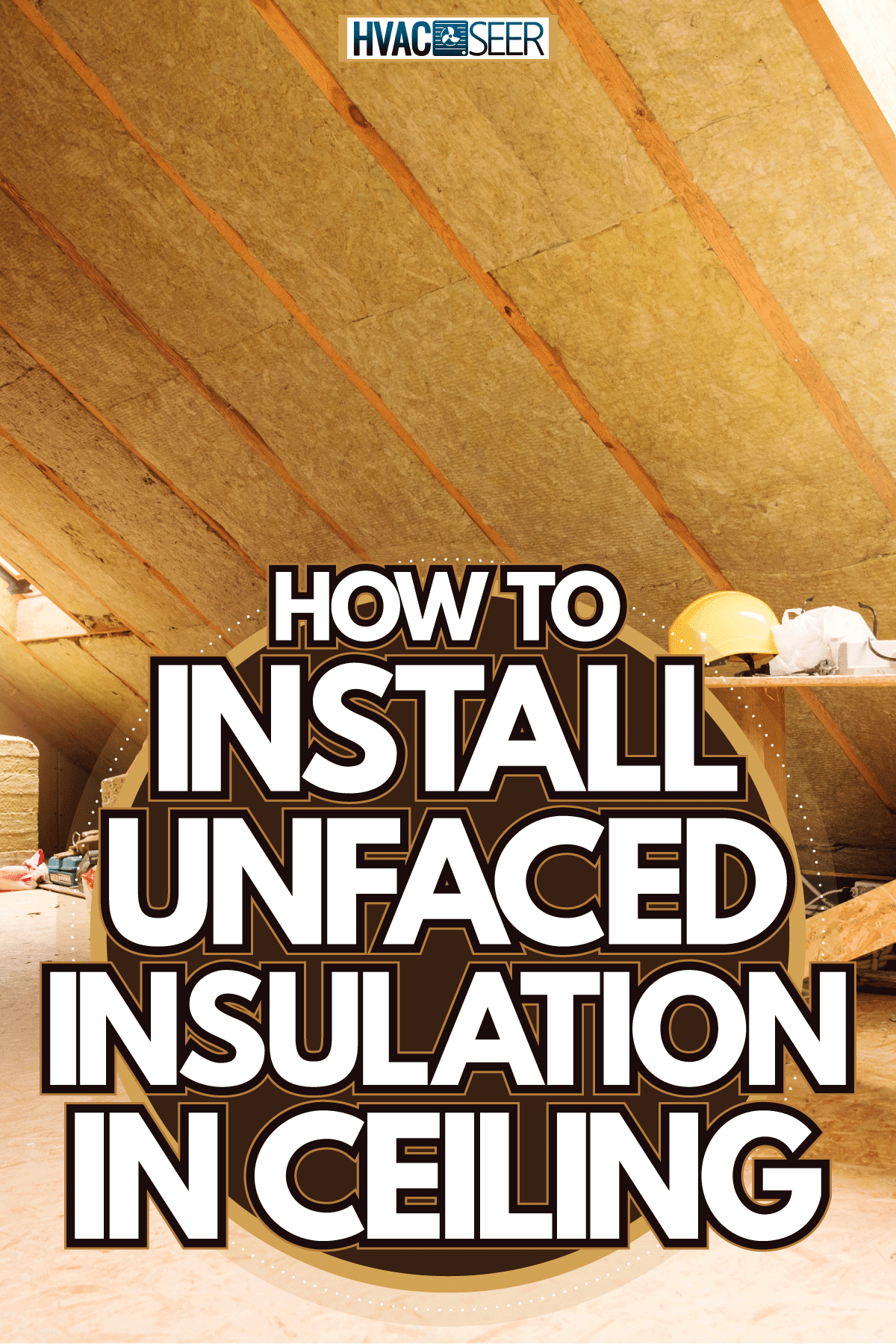
Face or Unfaced: Which one is best?
Every home needs proper insulation to regulate heat flow through ceilings and walls. Your home will remain warm during winter and cool during summer because the insulation slows down the heat transmission from the walls. It reduces noise so you can’t hear from the outside. Home insulation prevents moisture during humid or rainy weather.
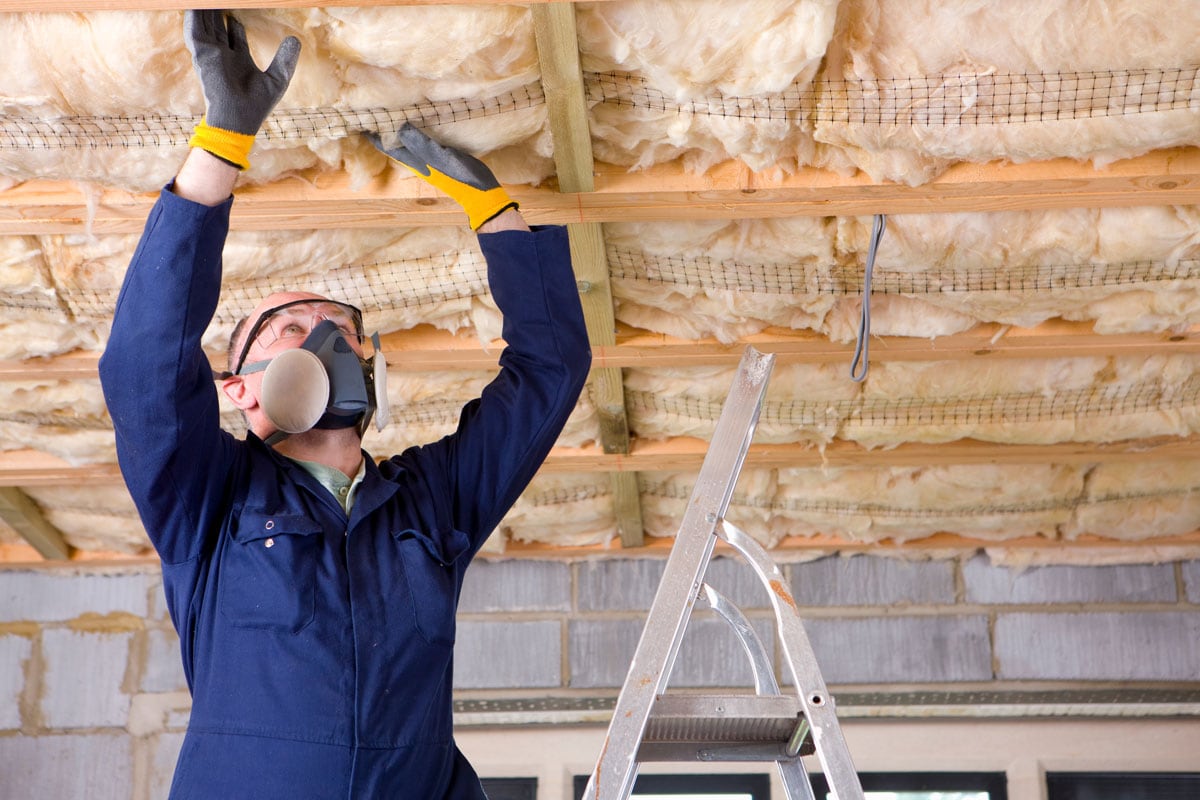
However, faced and unfaced insulation has substantial differences. It is overriding to determine the types of insulation, whether you are replacing or installing to ensure that you have the best home insulation.
Paper vapor barrier
Faced and unfaced insulation are good choices for home insulation. However, their differences tell you to know the possible locations to install each insulation.
Faced insulation has paper vapor retarder or barriers. The purpose of this is to keep off the moisture from penetrating the ceilings and walls at home. It is ideal in most humid areas and coastal locations.
Remember that some faced insulations use light aluminum foil or vinyl as barriers. These alternatives may not be favorable for some areas. So, make sure to check building codes or local regulations before you choose one for your home.
Check out this reflective insulation on Amazon.
Non-combustible
One of the advantages of unfaced insulation is that it has a non-combustible kind of material. It helps in reducing the possible chance of fire by becoming a barrier between the walls and ceilings. It slows down the spread of fire and stops it immediately.
On the other hand, faced insulation does not have the same advantage because of the flammable paper vapor barrier attached to the insulation.
It is common for faced insulation to use in the attic ceilings and exterior walls to prevent water from flowing inside your home, while you can add unfaced insulation to enhance its heat retention capability and also help to reduce damage caused by a fire.
Make sure that vapor barriers are installed outside the insulation and not in the middle. If it is in between faced and unfaced insulation, it causes moisture build-up leading to mold.
Easy to install
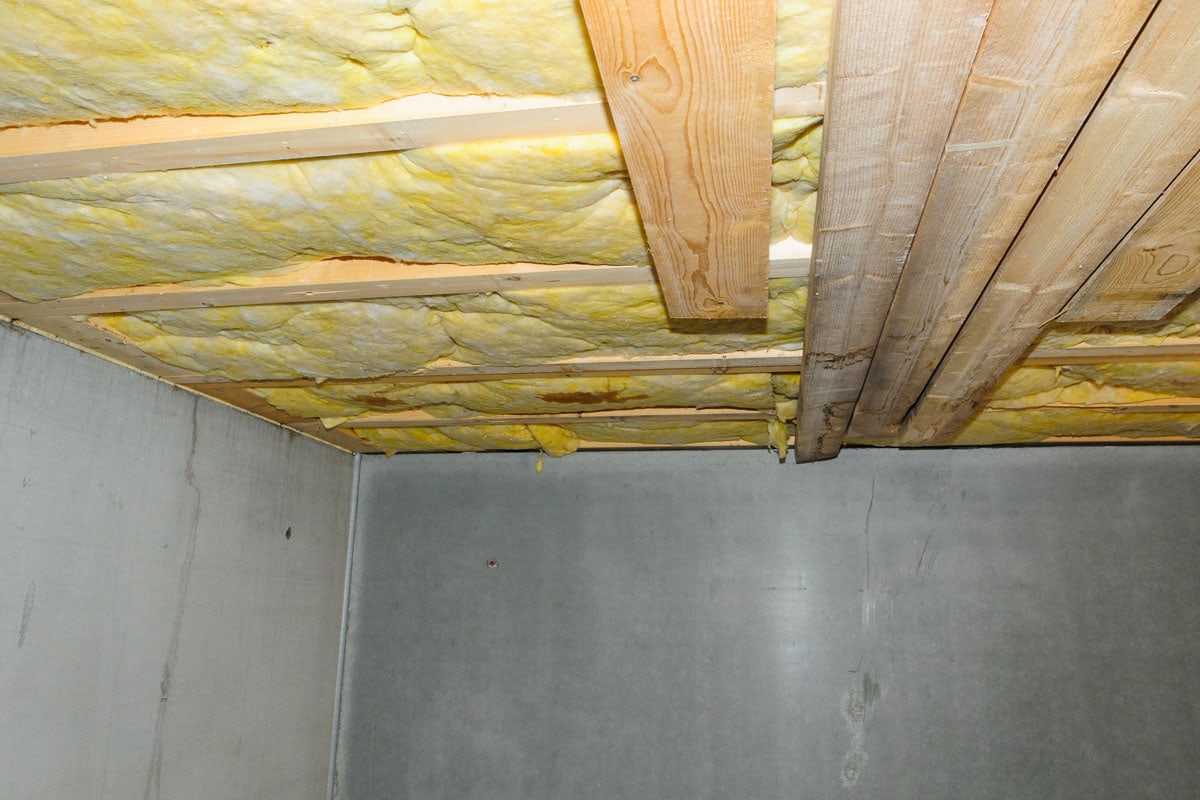
DIYers are looking for easy ways to home insulation. Faced insulation is easier to install than unfaced insulation because it has a paper vapor barrier which allows the faced insulation to move, rolled, and be stapled not to fall.
Unfaced insulation does not have that cohesive strength, thus, it is more susceptible to wear and tear. Moreover, staples do not work best with unfaced insulation. The installer will depend on the current insulation to stick to the ceiling or wall. Some installers increase the barriers over the unfaced insulation to block moisture and protect the insulation.
The cost
There is a slight difference between faced and unfaced insulation when it comes to their costs. On average, the faced insulation ranges from $0.50 to $2 per square foot whereas, unfaced insulation ranges from $0.50 to $1.75 per square foot.
The cost difference between the two indicates that faced insulation costs $0.10 to $0.25 higher than unfaced insulation. The credit goes to the vapor barrier. The slight increase in the cost should not create an impact for minor upgrades, although you need to provide insulation to the entire home. So, the price difference will depend on the type you choose.
Do not take it for granted that when the cost is higher, the greater the advantage. Take time to determine the proper insulation for your home so you will not regret it in the end.
What do vapor retarders and vapor barriers do?
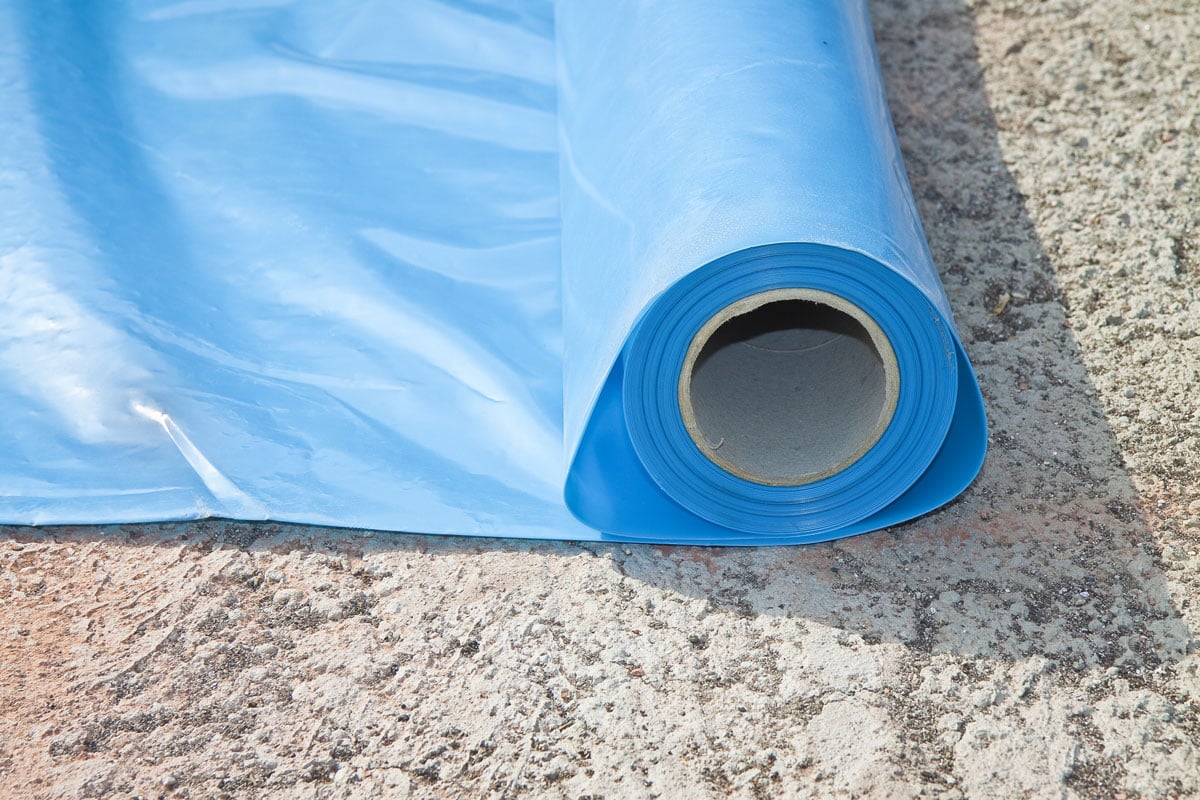
The terms vapor retarders and vapor barriers are often used interchangeably.
To explain their difference, it is imperative to know how thick or solid the materials are.
The ability for water vapor to pass through a material is known as permeability. In vapor retarders and barriers, permeability is measured in a unit called "perm."
Materials with a low perm rating mean the insulation has improved vapor barriers. A higher perm rating means they are more likely to absorb moisture and vapor.
Vapor barriers have a rating of 0.1 perms and below. They are laid out during home construction. The primary function is to minimize the many chances of moisture damaging your home’s material.
Vapor retarders are vapor-resistant. They reduce the trapped moisture from going side by side of the wall. Vapor retarders have non-perforated aluminum foil, glass, and sheet metal. Polyethene films, and foil sheathing.
Both vapor retarders and barriers diffuse moisture and vapor from your home. These two also protect you from too much hot or cold. Both of them effectively keep the home from easy-wearing out.
What to consider before insulation stacking?
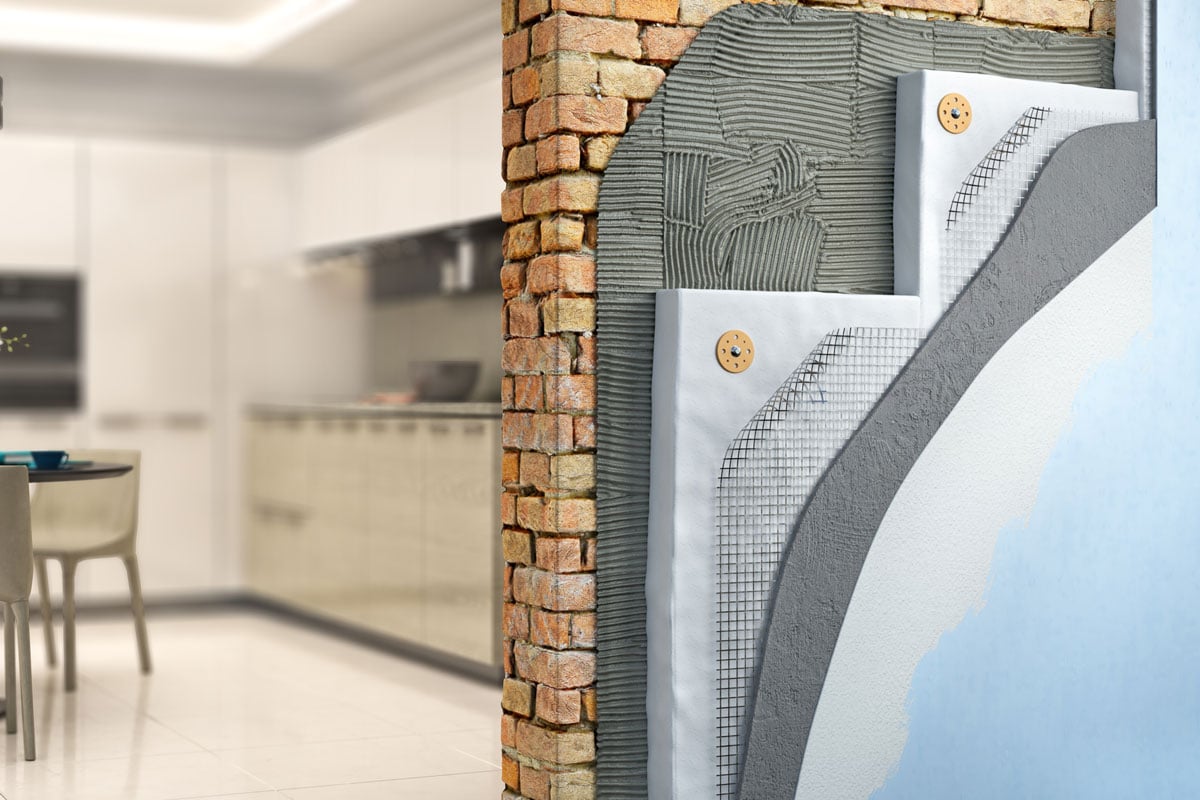
There are things that you need to consider when stacking insulation. If not, you might face different problems. The vapor barriers will create moisture and mold growth when the vapor barrier is trapped in the two layers of the insulation. It should be placed outside the insulation stack.
Cold weather: the vapor barrier should face the interior.
- If you have faced insulation, remove the layer and replace it with unfaced insulation. The faced insulation layer might be stacked up on the layer of the unfaced insulation.
- Once you have unfaced insulation, you can add another set of layers without having any issues.
- If you installed unfaced insulation and would want to install the other type, stack the faced insulation right at the top of your unfaced insulation as long as it faces the interior.
Warm weather: vapor barrier should face the exterior
- For any homes with a layer of faced insulation that faces their home’s exterior, stack layers of unfaced insulation. You won’t get any problem with that.
- If you want to install faced insulation to build a vapor barrier but you have unfaced insulation, you will just remove the existing and replace it. Then add again another layer of unfaced insulation at the top of the faced insulation layer.
In Conclusion
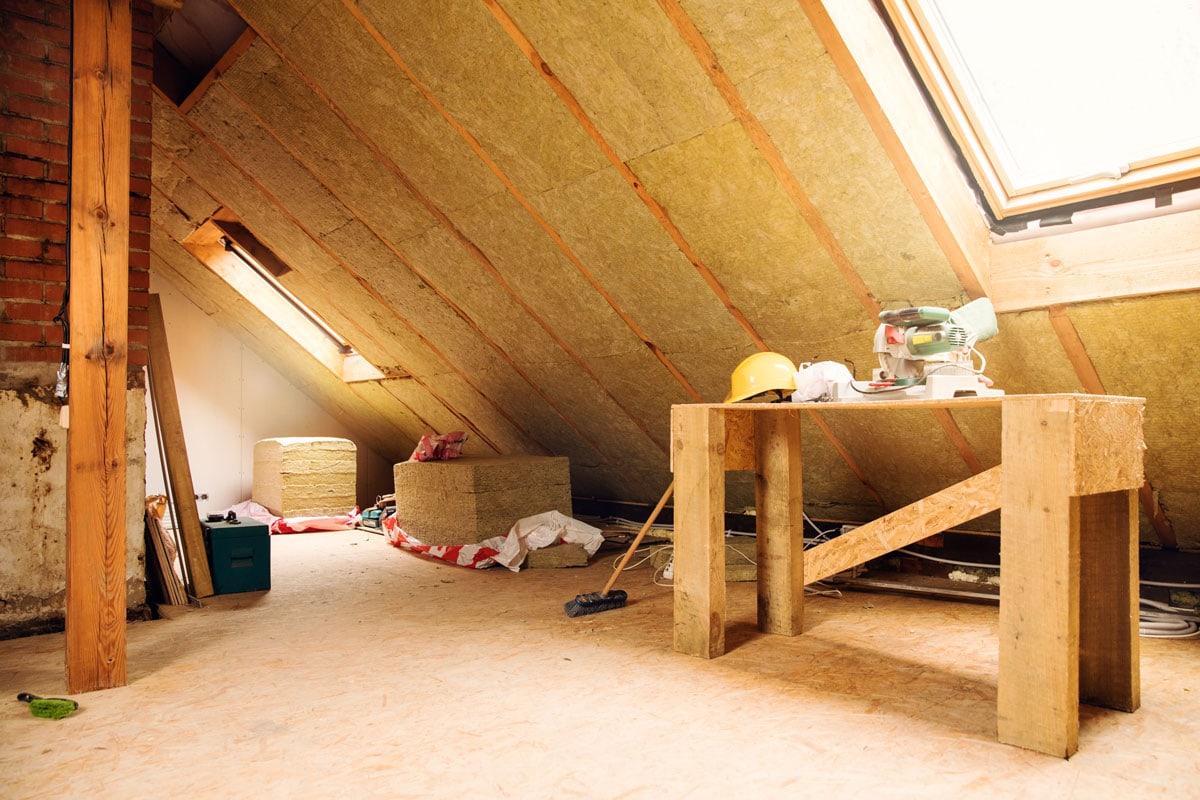
Faced and unfaced insulation can both be used to insulate a ceiling that is insulation deficient. In most cases, the vapor barrier provided by faced insulation isn't necessary for the ceiling, so you can feel free to use unfaced insulation for the job.
Unfaced insulation will cost you less when insulating a ceiling and can also offer some protection in case of a house fire.
If you found this article helpful, be sure to check out these great posts:
How Long Does Attic Insulation Last?

